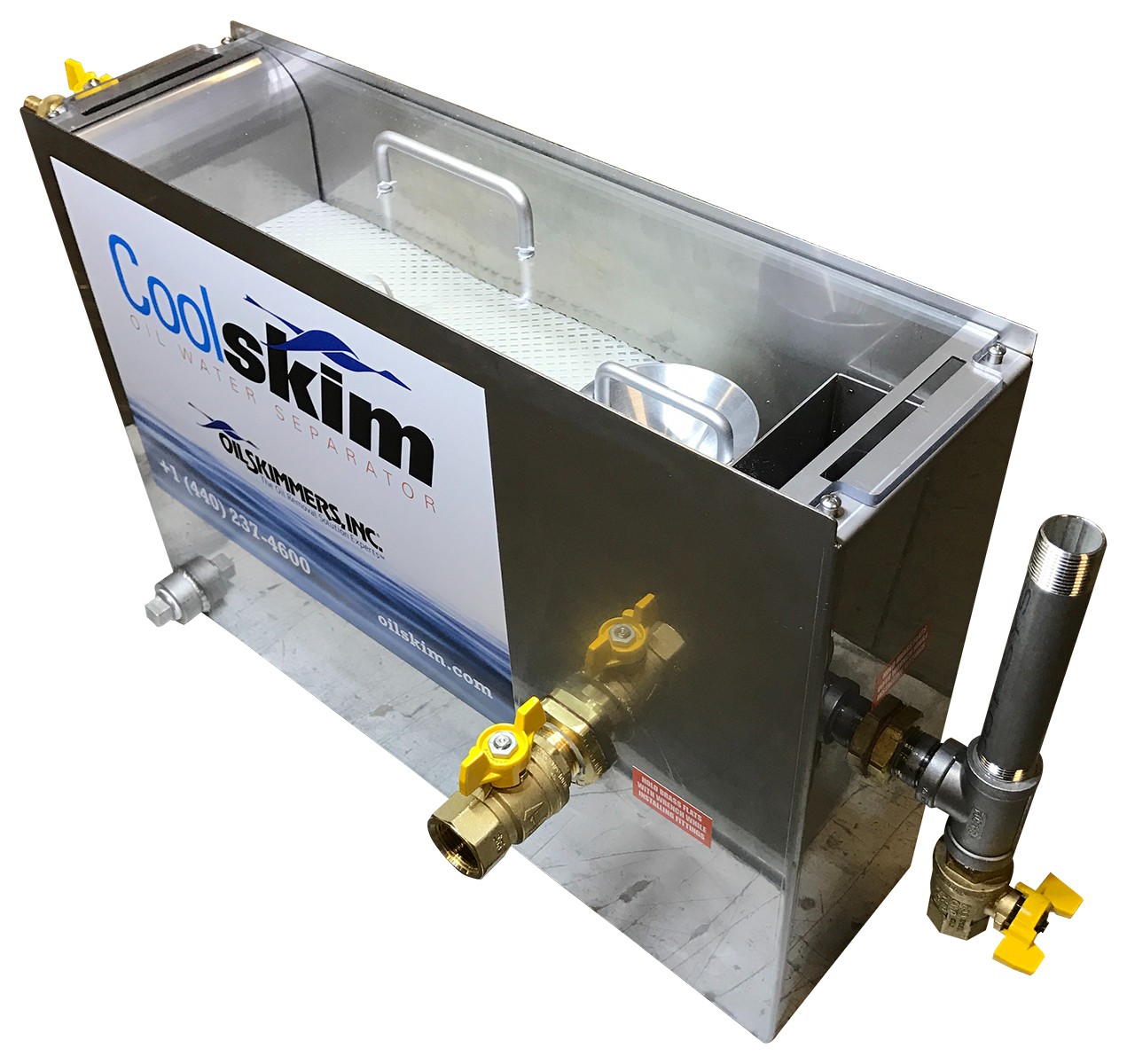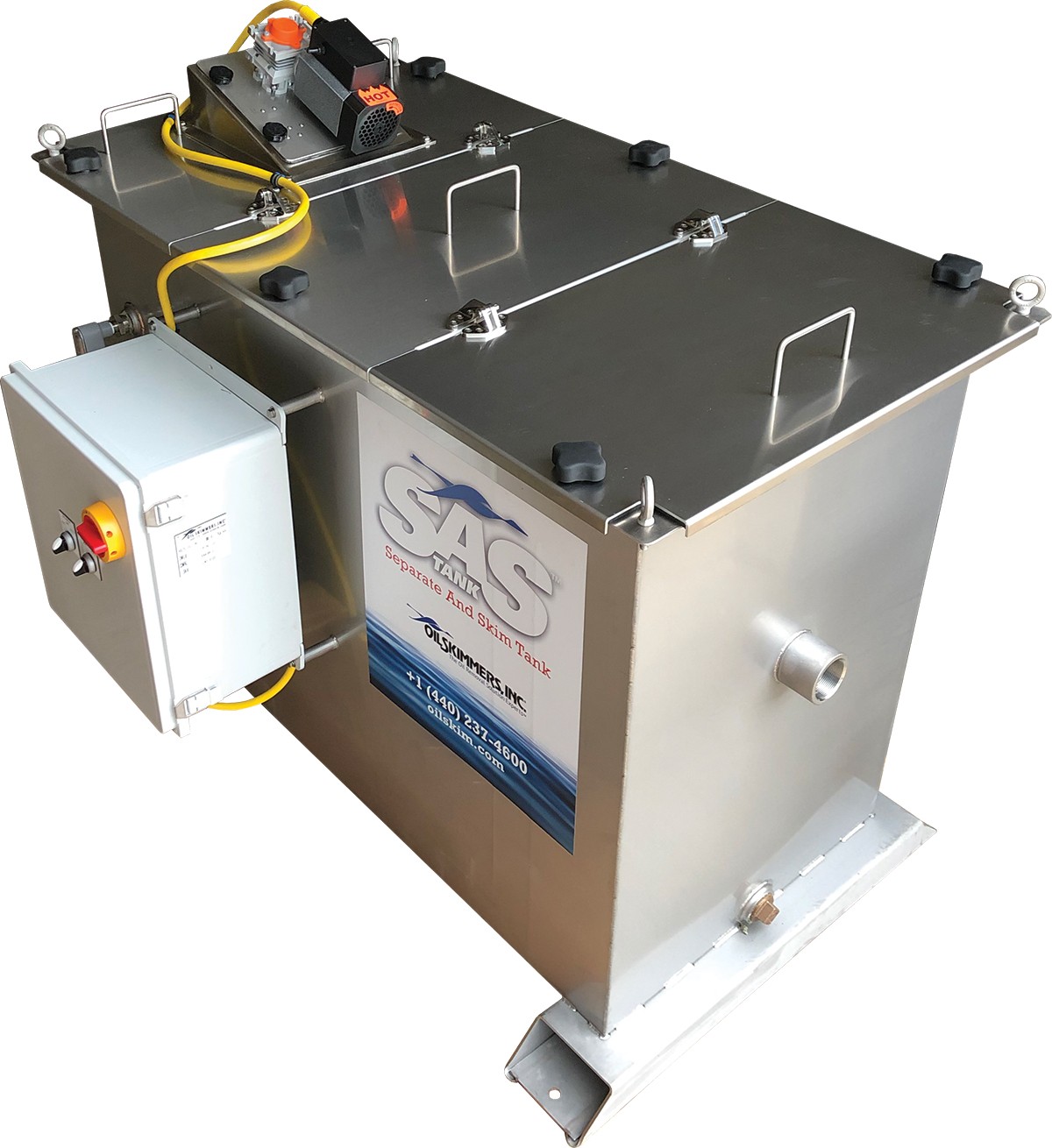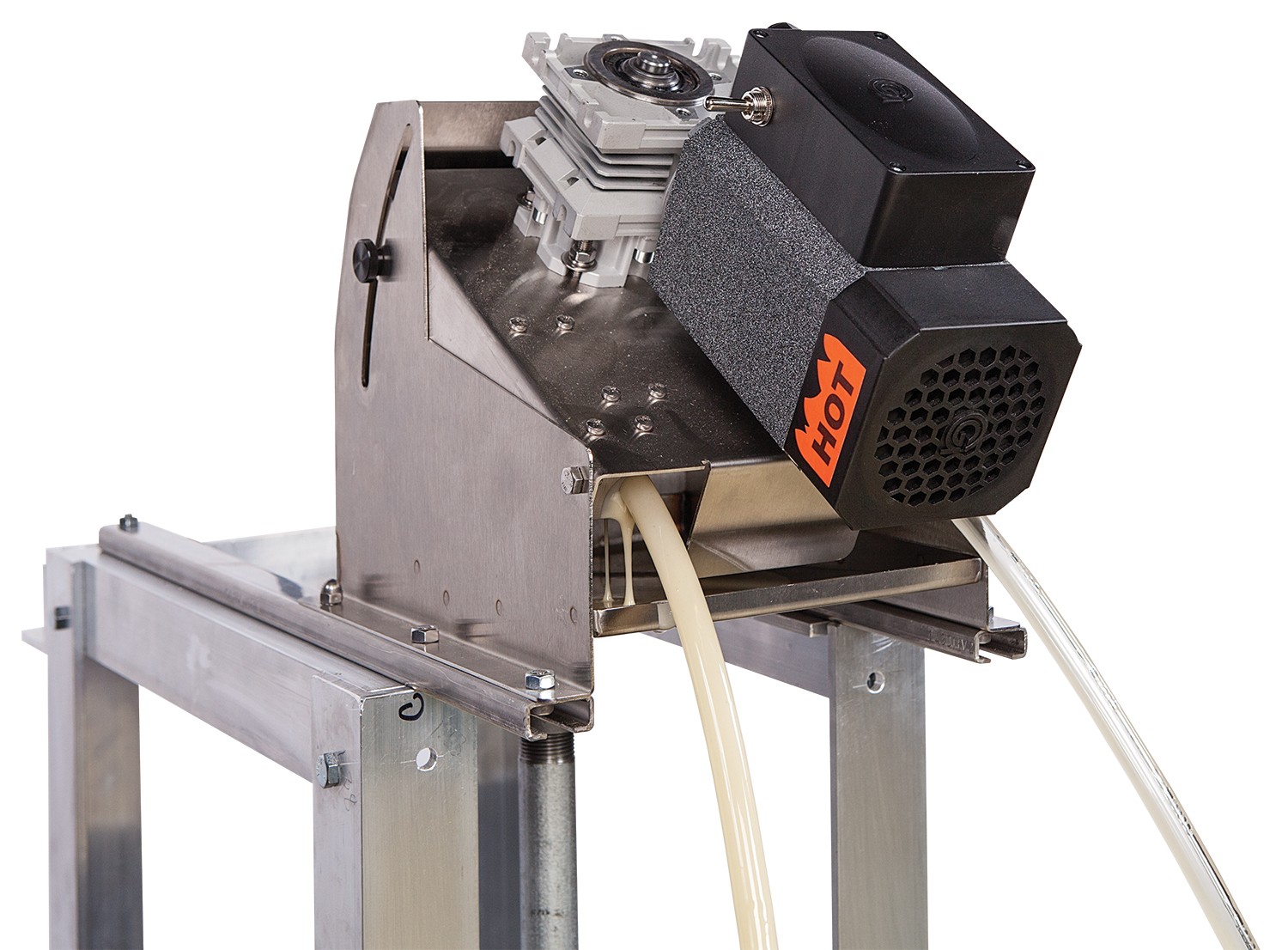To thrive, and in some cases survive, CNC machine operators are constantly driven to seek out new ways to reduce costs and improve finished part quality. However, many may be overlooking a significant opportunity to accomplish both mandates by focusing on improving the process of removing oil generated in the various stages of machining processes.
Whether "tramp" oil finds its way into coolant, or accumulates in parts washing baths, oil can wreak havoc on machining operations. Tramp oil in coolant can clog lines and spray nozzles, shorten tool life, stain workpieces and lead to inaccurate tolerances. The cost of replenishment and disposal of coolant is also substantial. In parts washing, oil that is not removed accumulates and contaminates wash solutions, resulting in frequent bath recharging, and poor adhesion during painting or plating.
There are also significant environmental treatment and disposal costs to consider.
Fortunately, the solutions to removing oil are similar regardless of its source. Oil that accumulates in tanks and sumps can be economically and efficiently removed through carefully designed continuous skimming and/or separation systems. When needed, these systems can be customized to meet the requirements of specific equipment and various configurations and sizes of coolant reservoirs from individual machine sumps to large central systems.
Removing Tramp Oil to Extend the Life of Coolants
Tramp oils (hydraulic oil, lubricating oil and greases, and protective metal coatings) can be generated by continuous small leaks from equipment, or a one-time occurrence, such as a hydraulic line break.
However, for machine tools to perform at peak efficiency, the coolant must be free from contamination. When tramp oils combine with other contaminants in coolant, they can form a sticky substance that clogs lines and sprays. When oil contaminated coolant hits the tool, the cooling effect of the coolant is reduced, causing shorter tool life, product staining, inaccurate tolerances, and a smoky atmosphere in the plant.
Tramp oils in coolant are also a breeding ground for bacteria and can cause problems ranging from unpleasant odor to employee skin rashes. If not removed, bacteria also slowly destroy the coolant.
Removing tramp oil extends the life of the coolant, allowing it to be used much longer.
Oil Skimmers and Separators
One cost effective and simple method to combat tramp oil is a surface oil skimmer that mounts on the coolant reservoir and continually draws off surface oil. For this to be an option, the tramp oil must separate from the coolant and gather on the surface.
The most efficient type of oil skimmer uses a Free-Floating Collector Tube™ that actively and continuously removes the oil and grease as it rises to the surface of the water. As the tube moves across the surface, oil adheres to the outside, then the tube is drawn through a series of ceramic scrapers that constantly remove the oil, which then drains by gravity into a collection vessel. The tube skimmer operates continuously with minimal attention or maintenance. Tube Skimmers come in sizes and configurations to fit all applications, from small individual sumps to large holding tanks.
For applications where the tramp oil does not easily rise to the surface, minor modifications can be made to the coolant reservoir to increase tramp oil separation prior to skimming. This can include reducing water turbulence, preventing coolant from plunging into the reservoir so tramp oil does not break into smaller droplets, and installing barriers that act as baffles.
However, if the oil is emulsified or entrained in the water, it must first be separated before skimming. In this case, the best option is a system that accomplishes both steps, such as the Separate and Skim (SAS) oil/water separation system from Oil Skimmers, Inc. For more than 50 years, the company has created skimmers and oil separation equipment that addresses applications from small individual machining centers to large central systems.
In some instances, space or access may also be limited, preventing the installation of an oil skimmer on or next to the coolant sump. The compact CoolSkim™, also from Oil Skimmers, provides a method of moving the coolant to a uniquely designed separator that facilitates the separation and removal of the oil, with the clean coolant being returned to the original sump/tank.
Extending the Life of Wash Solutions
Another common machining process is part washing to remove oils, coolant and other debris that accumulate during the various stages of the manufacturing process. If this oil is not adequately removed, poor adhesion can occur during painting or plating.
Although oil accumulation has long been an issue, parts manufacturers seeking a higher level of product quality often incorporate oil removal solutions in high-end, automated parts washers.
"If the wash is not properly prepared and foreign substances are not removed from the metal in the wash phase, the finish - the 'dress' - may not hold properly, and it may not wear well," says Jim Petrucci, vice president of Oil Skimmers, Inc.
As the wash stage removes the oil, it accumulates in the wash solution. This accumulation contaminates the wash solution, resulting in frequent bath (wash) recharging or improperly cleaned parts. These problems lead to ever increasing expenses that include disposal of the contaminated wash solution, additional use of chemicals, costly downtime, and increased labor.
Even parts washer OEMs are quick to acknowledge the critical importance attributed to a wash that is free of floating oil. One Midwestern parts washer supplier, in business more than thirty years, addressed the issue of oil accumulation in the wash by installing an oil skimmer with its equipment. The product, the Model 5H from Oil Skimmers, Inc. is a fully automatic skimmer used to decrease downtime and increase bath life.
With the skimmer, oil adheres to the outside of a closed loop tube as it is slowly drawn across the surface of the water, adjusting automatically to changing water levels.The oil-covered tube passes through scrapers that remove the oil. The clean tube then returns to the water surface to collect more oil. The recovered oil flows into a collection container and is virtually water-free.
"With the addition of the Model 5H [to our equipment], we have happier customers. The metals are cleaned of oil, we've saved the customer time and money, and the final plating or painting will ultimately adhere better, look better, and last longer on the metal parts,” said the company's director of engineering.
Because the wash is cleaner, they also notice better parts cleaning, less use of chemicals to combat contaminates, and better salt spray test results.
Another benefit of using a well-designed oil skimmer is that the process is less labor intensive.
"Downtime to recharge the water requires additional labor to restart the bath," he adds. "Plus, we do not have to monitor the wash as often, since we are putting in fewer chemicals. This oil skimmer can work unattended 24 hours a day without the need for someone to watch it.'
According to Petrucci of Oil Skimmers Inc., another parts washer OEM was motivated by increasing environmental regulations to add a skimmer to their equipment late in the design process, despite very little residual space for the unit.
"One of the challenges when applying a skimmer is the particular physical envelope available," says Jim. "If we don’t have an off-the-shelf unit, we have the ability to modify the equipment and mountings to fit the requirements. In this case, our engineering team designed a solution that would enable them to put a skimmer in that piece of equipment."
Oil and Coolant Disposal Costs
Whether generated in machining or parts washing, CNC operators incur costs for the proper treatment and disposal of oil in wastewater and when disposing of coolant.
In the case of coolant, one option is to pay to have the entire coolant mixture hauled away. However, waste haulers typically charge more if the oil has not first been removed from the mixture. Some will not take any mixture with oil.
The other alternative is to break down the coolant, discharging the water and disposing of the concentrate. Ultrafiltration and distillation are the most common ways to break down the coolant mixture, but each works better if any oil in the mixture is first removed. When free oil is eliminated from the coolant, the distillation process requires less energy; depending on the system, ultrafiltration efficiency increases from 20% to 70%. Certain coolants can be discharged into municipal sanitary sewers if they are oil-free.
Immediate Cost Savings
With so much to gain, including immediate cost savings, installing an efficient oil removal system far outweighs the initial cost of the equipment.
"Machining operations, including major aerospace and automotive corporations, consulting with us on oil removal solutions usually have one of three motives: to improve the quality of their finished parts, extend the life of coolants and wash solutions, and to meet the increasing environmental standards for treatment and disposal," say Petrucci.
"Given that the efficient and economical removal of oil can impact all three factors concurrently, it is something machine shops should be reviewing much more closely," concludes Petrucci.

The compact CoolSkim™ from Oil Skimmers provides a method of moving the coolant to a uniquely designed separator that facilitates the separation and removal of the oil, with the clean coolant being returned to the original

If the tramp oil is emulsified or entrained in the water, it must first be separated before skimming and the Separate and Skim (SAS) oil/water separation system from Oil Skimmers accomplishes both steps.

For more than 50 years, Oil Skimmers, Inc. has created skimmers and oil separation equipment that addresses applications from small individual machining centers to large central systems.
For more information about oil skimmers, oil removal systems, or how to design an oil water separator for your oily water application, call: 440-237-4600; email: info@oilskim.com; visit www.oilskim.com; or write to Oil Skimmers, Inc., 12800 York Road, Cleveland, OH 44133.
By Jeff Elliott
Jeff Elliott lives in Torrance, California
and has written about technical issues for 20 years.














